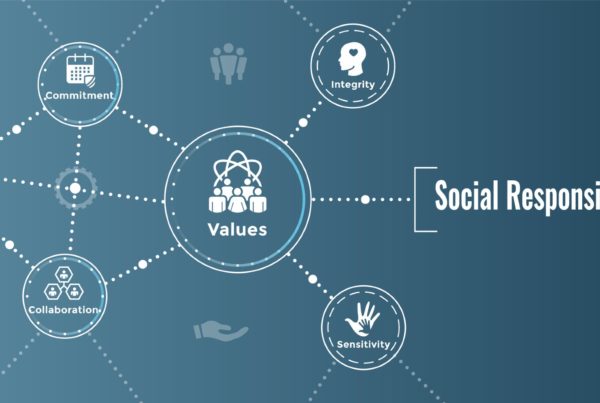Guest Contributor: Stewart Smythe, CEO Ascent
The last decade-ish has been all about cloud for mid-market European businesses, positioning investment in modern infrastructure and technology operations as the critical enablers of future value.
Originally a software business, when we set about redesigning Ascent’s core proposition in 2019, we felt instinctively that our role should be about helping those same businesses realise the promise of that investment, applying development principles to shift emphasis to more immediate business impact that would be visible at a user or day-to-day level.
Several acquisitions later, we’re a digital transformation business that differentiates with data science. And the narrative has evolved accordingly: today when we talk to customers, we often refer to the concept of ‘digital muscle’ – the idea that a strategic approach to building and strengthening core capability around data, software and cloud platforms empowers businesses to take on incrementally greater challenges and opportunities. We also maintain our original focus on impact and visibility.
When C-19 hit in early 2020, our capability put us in an undeniably enviable position: Covid as a catalyst for accelerated digital transformation is not news. Back in peace-time, the dynamics determining the pace of digital change for mid-tier business were fairly predictable: investment appetite (financial and effort-based) linked to industry momentum, customer expectation, prioritisation and competition.
But in a pandemic-ravaged landscape, timelines collapsed in on themselves as businesses had to create what Satya Nadella, Microsoft’s Global CEO, famously described as 2 years of digital transformation in 2 months – in some cases to capitalise on new consumer behaviours, in some cases to maintain a competitive position and in some cases simply to survive.
Almost overnight, the role of technology in our customer base needed to take on proportionally massive increases in responsibility and reliability. Modernisation became urgent to create better control mechanisms and link revenue to customer insight. Scale became a universal challenge as consumer expectations changed and converged on online platforms and delivery channels unprepared for the volumes.
Some customers in travel failed. A customer who leads the way in home automation thrived. And some exhilarating new opportunity came our way.
- A high-profile public sector real-estate business adapted its procurement approach to deliver a complex 15 vendor RFP process via remote working, notably in a scenario where cultural alignment was a key decision-making factor
- A niche beverage company made a pivotal shift and decided to go mass market to capitalise on a real-time window of opportunity, mobilising delivery resources within just 8 days to hit deadlines
- A beauty brand had to clear 5 years of accumulated technical debt in 7 months to retain the ability to operate effectively in a multi-channel sales environment.

Our proposition had never been more relevant – but if we were completely honest with ourselves, we weren’t (just) winning because of smart messaging. It was all about empathy.
No one talks about empathy in technology much – as an industry we are far more comfortable focusing on features and metrics. But digital transformation is hard. And the more we thought about it, the greater the priority that concept assumed. So we made some changes to the way we work with our customers, driven by medium-term pandemic dynamics but now very much here to stay.
Speed of mobilisation and delivery
The obvious one. Procurement processes have accelerated; delivery timelines have compressed. We had to find a way to prioritise speed of deployment for customers without diluting the value or quality of our consultative delivery process. Taking the time to understand a customer would usually mitigate programme risk, but in a scenario where losing a month is like losing a year, the ability to start fast is now a make-or-break attribute in customer procurement processes. We had to adapt our team structures, systems and processes to ensure the front end and back end of our business could communicate optimally in high pressure scenarios.
Resource continuity is now non-negotiable. New knowledge sharing techniques and tools have strengthened communication. Putting delivery resources in the pre-sales process, particularly around programme management, has built customer confidence and trust.
Success-oriented relationships
Covid gave us the opportunity to really live up to our core values, taking on the weight of customer responsibility and really understanding their pressures and drivers. Any good services business builds meaningful relationships with customers – but in some cases we went a step further and applied unique contractual mechanics that allowed them to define success on their terms, whether technical or commercial (one example includes achieving a world record-breaking funding target).
Commercial approach
More generally, we talk about what we deliver to customers in terms of discrete units of new or enhanced capability, for which we are commercially accountable. Examples include connecting with a new academic community, reporting on a new investment or converting buyer behaviours. Like many businesses during the first wave of Covid, we initially offered attractive rate card discounts to make it easier for customers to get started but we have since evolved our approach and now place a percentage of our revenue at risk over the lifetime of a contract if we fail to deliver on our capability commitments. We have learned that a more desirable customer benefit is certainty and shared responsibility rather than an optically lower price point.
In summary, prioritising empathy and humanising the relentless digital challenge under massive external pressure has prevented us from becoming protectivist and hardening processes and policies at a time when we most needed to stay agile. It has allowed us to create space for a different kind of customer relationship – grown up, resilient, flexible, commercially agile, constantly mindful of its fundamental aims. And we’re not looking back.



